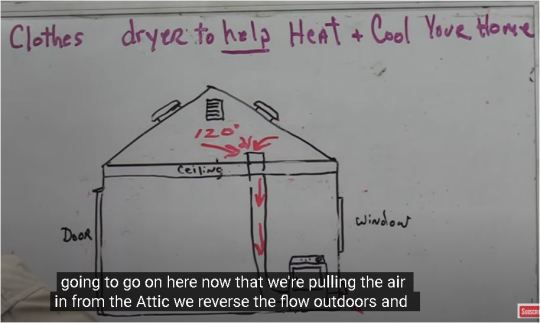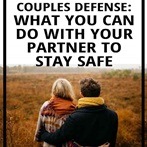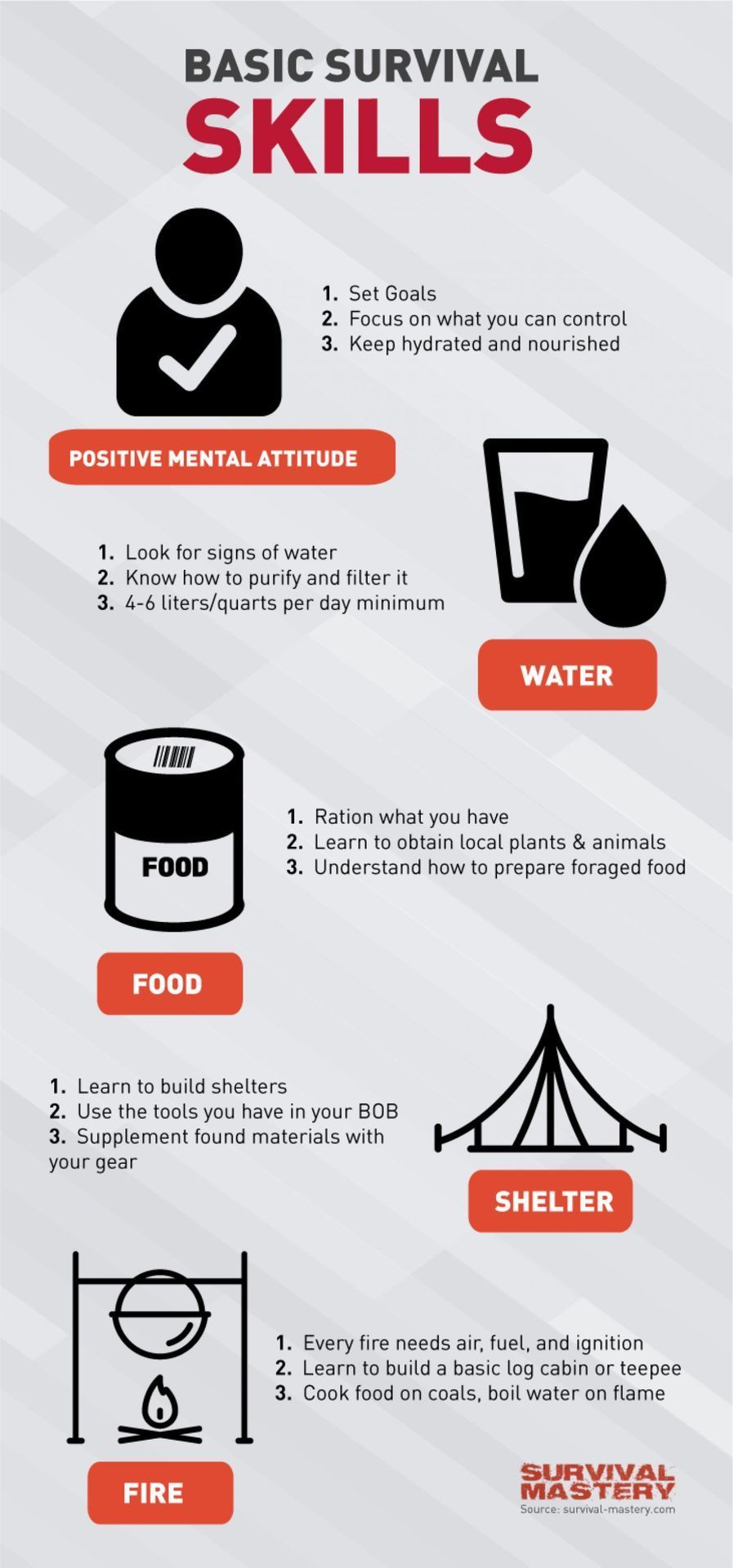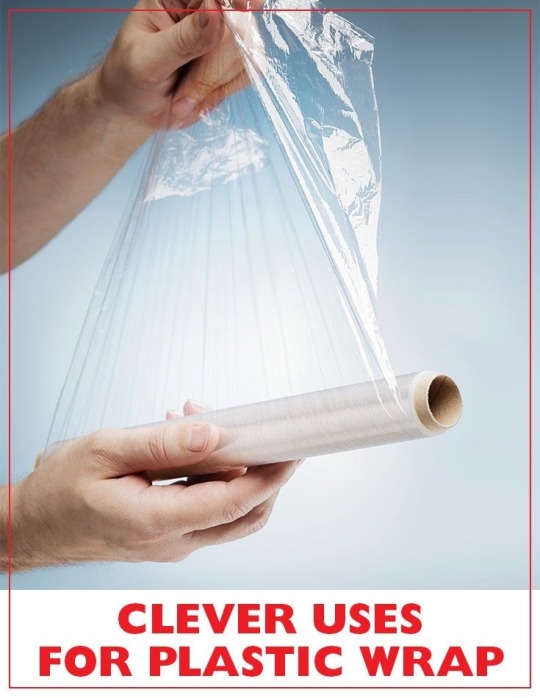#prepare4tomorrow
Text

Use an Analog Clock as a Compass:
Using a Watch to Find North: The watch method for navigation is useful for finding the cardinal directions of: north, south, east and west. While not being 100 percent accurate, it is handy for crude navigation when a compass is not available and can head you in the correct general direction in camping, bushcraft, backpacking and survival situations. It is also useful in combination with other natural navigation methods found in this link and other resources.
If Located in the Northern Hemisphere:
Align a twig (pointing up) at the edge of your watch so that it casts a shadow onto the face of the watch from the Sun.
Rotate the watch until the twig's shadow (the Sun) is cast directly onto the hour hand.
The halfway point between the hour hand and the 12-oclock mark is your North-South line. Note that during Daylight Saving Time (or Summer Time), your watch is most likely one hour "off" from the "real" time. If this is the case, substitute 1 o'clock for 12 o'clock before finding your North-South line.
The halfway imaginary line will point to South
If only a digital clock is available, draw an analog/dial clock (with the correct time) on paper or in the dirt.
If Located in the Southern Hemisphere:
Align a twig (pointing up) at the edge of your watch so that it casts a shadow onto the face of the watch from the Sun.
Rotate the watch until the twig's shadow (the Sun) is cast directly onto the 12-oclock mark.
The halfway point between 12-oclock and the hour hand is your North-South line. Note that during Daylight Saving Time (or Summer Time), your watch is most likely one hour "off" from the "real" time. If this is the case, substitute 1 o'clock for 12 o'clock before finding your North-South line.
The halfway imaginary line will point to North.
If only a digital clock is available, draw an analog/dial clock (with the correct time) on paper or in the dirt.
[Reference Link]
Related Resources:
Survival Navigation - Find Your Way Out
Wilderness Shelter
Fire Building for Cooking, Heat and Light
Finding, Collecting and Purifying Water in the Wilderness
Handling Injuries, Illness and First Aid in the Wild
[14-Point Emergency Preps Checklist]
[11-Cs Basic Emergency Kit]
[Learn to be More Self-Sufficient]
[The Ultimate Preparation]
[5six7 Menu]
#navigation#compass#prepare4tomorrow#prepper#survival#shtf#lost#clock as compass#compass from a clock#finding directions#campsite#camping#explore#analog watch#prepping#directions#find home#hiking#bushcraft#homesteading#wilderness
96 notes
·
View notes
Text
0 notes
Text


Heating and Cooling the House with Your Clothes Dryer:
First of all, this method of dryer venting should only be used for ELECTRIC dryers (not gas). Additionally, this may be regulated or prohibited by government or may void the dryer warranty so check these out, if you wish, before proceeding with the installation. As with any information you receive, it's always best to do your own [thorough] research before proceeding at face value. Now that that is out of the way, let's proceed with this post.
While researching a dryer venting solution for my friend, I found this option. Because he was renting and did not want to drill a 4 inch hole in the wall, this seemed to be the best solution for him, along with the added benefit of heating his home while drying clothes. His landlord did not express opposition to the idea. There are several configurations, most of which use water to collect the dust that would normally blow into the home environment; some have better filtering than others and you can also make one yourself (DIY). We selected the FUNMAS 3-in-1 Indoor Dryer Vent because of its filtering and functional design.
Basically, instead of running the ducting hose from the dryer to an external vent, the ducting hose is run from the dryer to the Indoor Dryer Vent. It is recommended to clean the indoor vent as needed or after 6-12 uses, depending on the model used. Additionally, the ducting hose should be periodically cleaned out as lint accumulates in its folds and at the dryer exhaust. Totally remove the ducting hose from the dryer and Indoor Dryer Vent, take it outside, and use a brush, leaf blower or vacuum to clean out the accumulated lint residue. Then vacuum out the dryer exhaust before reattaching the ducting hose.
Because the heat from the dryer is not being forced outside, the heat remains in the home which could lower the winter heating bill. Just make sure the Indoor Dryer Vent is not enclosed but exposed to allow the heat to escape to the rest of the house. Also consider that humidity will increase in the house as the dryer removes water from the clothes so running a dehumidifier may be beneficial. Consider other environmental issues as well. Unfortunately, summer is a different matter and another solution may need to be considered to avoid making a warm home warmer. If venting outdoors is impossible, consider hanging clothes outside or employing one or more of these options.
Now, if you're really energetic, the clothes dryer can also be used to cool your home in the summer by pulling attic heat into the dryer's intake which also pulls cooler outside air into the attic to cool the attic and the house. Because the dryer is pulling heated air from the attic, the dryer's heating element may be used less during the drying cycle, saving money.
Resources:
Health/Structural Issues by Discharging Dryer Vent Inside the House
Indoor Dryer Vent Kit: Do They Work (Pros & Cons)
Indoor Dryer Vent and Its Pros and Cons
Periodic Dryer Vent and Hose Cleaning is a MUST
How to Heat and Cool Your Home for Free
The Many Re-Uses for Dryer Lint
Drying Clothes Without a Dryer
Off-Grid Laundry Day
[Reference Link
[14-Point Emergency Preps Checklist]
[11-Cs Basic Emergency Kit]
[Learn to be More Self-Sufficient]
[The Ultimate Preparation]
[5six7 Menu]
P4T receives earnings from qualifying purchases using re-directing links that may be contained in this Post. Thank You for your support.
#clothes dryer to heat and cool house#prepare4tomorrow#prepper#survival#diy#clothing#heating cooling#indoor dryer vent#attic air to dry your clothes#laundry
37 notes
·
View notes
Text

Survival Uses of Chewing Gum:
Go into any grocery store, gas station, convenience store and you’re going to find packs and packs of chewing gum.
What used to be considered a candy, has now become a health food (of sorts) as gum makers have moved to create gum that’s healthy for your teeth, won’t cause health issues and may be made to address a specific benefit like staying awake (caffeinated).
While chewing gum isn’t on the same level as a water filter or a camping stove, you’ll find that keeping some of this stored in your survival kit or bug out bag is a worthwhile addition.
How can Chewing Gum Help You Survive?
Scientifically proven to alleviate anxiety and stress, lowering Cortisol.
Fights fatigue and improve mental alertness.
Enhances working memory and brain performance.
Improves concentration.
Boosts morale and energy.
Aids digestion by increasing the salivary flow.
Quenches thirst and prevents "dry mouth" by stimulating saliva.
Suppresses an appetite to lose weight or when eating is not convenient.
A sticky substance to bind things together and fill gaps.
Fishing lure.
Fishing bobber/float (Survivorman, Georgia Swamp, S1E4).
Bartering tool.
Promotes oral health by breaking down food particles brushing can't reach.
Prevents watering eyes while slicing onions.
A fine addition as composting material.
Freshens Breath.
Combats acid reflux, nausea and dizziness.
Curbs addictions (like smoking and eating)
Start a Fire with Foil Gum Wrapper and Battery
Removes "Earworms" (a song or thought stuck in your head).
Other Resources:
Chewing Gum Facts
What to Know About Chewing Gum
Health Benefits of Chewing Gum
Recycle Gum into Other Useful Products
Discover Chewing Gum’s Crazy Survival Uses
[14-Point Emergency Preparedness Checklist]
[11-Cs Basic Emergency Kit]
[Learn to be More Self-Sufficient]
[The Ultimate Preparation]
[5six7 Menu]
#chewing gum#chewing gum survival#survival gum#prepare4tomorrow#prepper#survival#diy#shtf#bartering#bugout bag
47 notes
·
View notes
Text

Couples Defense: Staying Safe Together:
Committing to help one another, as a couple, family or team of like-minded individuals to stay safe, gather supplies, plan and prepare physically and emotionally is a vital skill to learn.
Forget the chocolate and flowers! What better way to say I love you than to commit to staying safe with your partner by doing these things together:
Plan Ahead
Learn How to Defend Each Other
Get in Shape, Stay in Shape and Eat Healthy
Encourage One Another to Ditch Unhealthy and Wasteful Habits
Prepare for Anything
Know Basic First Aid and Build Your Prevention Medicine Cabinet
Learn the Basics Together
Include Pets in the Planning
[Reference Link]
RELATED RESOURCES:
Why Plan for an Emergency
Prepping Your Spouse for a Preparedness Lifestyle
How to Prep When Your Significant Other or Family Objects
The Best People to Be Friends with Before SHTF
How to Find Survivalist Friends
How your friends can influence your mood and behavior
Helping Others Help Themselves
Emergency Planning with Like-Minded Companions
Why Join or Start a Survival Group?
The Law of Attraction
Importance of a Buddy System
Personal Benefits of Volunteering
Know Your Neighborhood - The Lay of the Land
Emergency Prepping for Seniors and Mobility Challenged
Animals for Emergency Companions and Defense
Body Language: Reading Non-Verbal's and Building Trust
No Sense of Community in Modern Society
The Lone Wolf Prepper
[14-Point Emergency Preps Checklist]
[11-Cs Basic Emergency Kit]
[Learn to be More Self-Sufficient]
[The Ultimate Preparation]
[5six7 Menu]
#companionship#survival companions#prepper#survival#survival team#couple#couples#shtf#companions#spouse#prepping with spouse#prepping objections#prepping with others#prepping with family#family prepping#couples survival#couples defense#couples emergency survival#camping#hiking#homesteading#prepping#prepare4tomorrow#bushcraft#lone wolf
37 notes
·
View notes
Text

Have you ever missed the signs of someone who really needed help?
Or have you ever been in trouble and needed to let someone know but they didn’t get it?
Some victims have used creative ways to inform other people of their predicament. There was one domestic abuse victim who used her dog as an excuse to get out of the house. When she got to the vet, she slipped a note to the nurses, who responded immediately.
This Silent Sign Language Communication for "HELP ME" is something everyone should know to use if facing a potentially violent situation or recognize if another person uses it to summon assistance when they can't speak the words because they are in a violent situation (or they physically can't speak).
If you are someone who needs help; in one motion, hold your palm up, tuck your thumb in and then close your fingers over to trap the thumb. Review the descriptive links below.
Learn it and teach it to someone you love. You might save a life.
[Video]
[Article]
[14-Point Emergency Preparedness Checklist]
[11-Cs Basic Emergency Kit]
[Learn to be More Self-Sufficient]
[The Ultimate Preparation]
[5six7 Menu]
This blog is partially funded by Affiliate Program Links and Private Donations. Thank you for your support.
#prepare4tomorrow#help me silent hand signal#prepper#survival#shtf#HELP!#HelpMe!#hand signal 4 help me#sign language for Help Me!
26 notes
·
View notes
Text

Psychology of a Self-Defense Shooting
As a staunch advocate for the Second Amendment, I support anyone who wants to own and carry a firearm. I believe they must, first, have the mental and emotional capacity to accept that responsibility and, second, have proper and regular training.
When family or friends tell me they're going to buy a gun, the cop in me responds "can you kill another human being and live with the psychological and financial consequences?"; because you will get arrested and sued. The police will arrest you and the family of the dead, or seriously injured, person will sue you.
I follow up that they must get mentally prepared, NOW, to know what they will do when they are confronted with a self-defense encounter. The number two rule in firearm safety is "don't point a firearm at anyone/anything you don't want to kill/destroy" and the number one rule in conceal carry is "don't pull/display your firearm unless you intend to use it". In your mind, right now, you must make the determination that you will kill anyone who puts your life, or loved ones lives, in jeopardy. You must determine that you will live with the consequences BEFORE that situation presents itself.
In a self-defense situation, you have seconds to decide how you will respond and you must respond as if your life depends on it; because it does. You can't "think" about it; it must be instinctual, not intellectual. Instinctual in that you have thought about this and KNOW what you will do in response. The attacker has already had time to think about, and KNOW, they are willing to hurt or kill their victim.
Your other options are to run (if you can) or give the perp(s) whatever they want if that's all they want.
Always be aware of what is going on around you and KNOW, BEFOREHAND, how you will respond to a self-defense encounter.
Related Resources:
Keep Shooting (Fighting) Until the Threat Stops!
20 Rules for Winning a Gun Fight
21-Feet Rule - The Tueller Drill/Principal
How to Survive an Active Shooting Encounter
About the Photo
[14-Point Emergency Preps Checklist]
[11-Cs Basic Emergency Kit]
[Learn to be More Self-Sufficient]
[The Ultimate Preparation]
[5six7 Menu]
This blog is partially funded by Affiliate Program Links and Private Donations. Thank you for your support.
#prepare4tomorrow#prepper#prepping#survival#defense#self-defense#firearms#guns#second amendment#2nd amendment#firearms training#psychology of a shooting#psychology self-defense
16 notes
·
View notes
Text

Survival Clothing What to Wear:
It would be great to know where we will be and what the temperature will be like when the SHTF. But that ain't a gonna happen and you can't carry everything for every little situation. Here are some things to consider as a general rule for the unexpected and the planned outing:
Wool vs Cotton:
Wool is best for cold weather while cotton is best for warmer weather. Wool is a powerful insulator. In fact, it's the second-best natural insulator next to goose down. It also repels water and wicks moisture. The lanolin, with its antibacterial, antimicrobial and water repellant properties, can irritate skin and can't be removed simply through washing. It's more durable and more wrinkle-resistant than cotton and it hardly retains odors and stains. Cotton, on the other hand, is a warm-weather fabric. Like wool, cotton has moisture-wicking properties. But the difference between wool vs. cotton is that cotton is a light, breathable fabric that helps you stay cool in the summer. It also provides excellent protection against the ultraviolet rays of the sun. It's hypoallergenic, easy to care for, and affordable.
Survival Clothing Principles:
Your body helps regulate body temperature. Clothing should work WITH your body. Exercise can help keep you warm in the winter and hydration (water intake) will help keep you cool in the summer.
Bulky or tight clothing is bad for survival. Synthetic [lighter/thinner] "fabrics" may be better options.
What you have with you when SHTF will be your survival clothes. Keep your "survival" clothing near you at all times (in a bug-out bag that is WITH YOU).
Dress for the function, not the fashion/form; the proper clothing for the situation.
Dress to blend in with the environment (gray man).
Related Resources:
Choosing the Correct BugOut Clothes
Clothing for Survival and BugOut Situations
The Survival Clothing - Must-Haves for Any Situation
Stretch Shoes/Boots With Ice
Know How to Make Primitive Footwear
Making Wilderness/Survival Snowshoes
Winterizing Toes and Fingers
Primitive Needle and Thread
Clothes When You Are Living Off Grid
Clothing to Protect from Sun and Insects
Insect Protection: [Link 1] [Link 2]
Clothing Repair Kit (and What to Do if You Don't Sew)
Learn to Make Your Own Clothes From Scratch
How to Dry Wet Clothes in the Wilderness
[14-Point Emergency Preps Checklist]
[11-Cs Basic Emergency Kit]
[Learn to be More Self-Sufficient]
[The Ultimate Preparation]
[5six7 Menu]
#clothing for survival#dressing for SHTF survival#prepare4tomorrow#prepping#prepper#survival#shtf#prepper clothing#survival clothing
17 notes
·
View notes
Text

Don't think you are depression-proof. Plan ahead for hard times and practice. You won't be disappointed. Living hand to mouth eventually gives you a can-do attitude that can be a lifesaver. Even if you have to give up your home, you will still have one.
Whether by choice or necessity, living in a car (other than an RV) will be even more challenging than living in an RV; space and basic amenities being the main factors. First on the list of preparations is to prepare it for an Emergency as any good prepper would do. Then consider things like, efficient use of available space, locations to park/rest, camping/cooking/sleeping setup/equipment, personal care products and staying clean, seasonal clothing, food and drink, privacy from prying eyes, communications (cell phone, WiFi/hotspot), staying warm and keeping cool.
Related Links:
How to Live Out of Your Car
Being Prepared to Live in Your Car Successfully
Surviving in Your Car
Why Living in an RV is better than living in a House
Living With Nothing; When Life Throws a Curve Ball
The Suze Orman Story
6x10 Cargo Trailer Conversion
Preparing Your Vehicle for an Emergency
[Reference Link]
[14-Point Emergency Preps Checklist]
[11-Cs Basic Emergency Kit]
[Learn to be More Self-Sufficient]
[The Ultimate Preparation]
[5six7 Menu]
This blog is partially funded by Affiliate Program Links and Private Donations. Thank you for your support.
#live in your car#shelter#vehicle#car#rv#prepare4tomorrow#prepper#survival#shtf#cargo trailer bugout
28 notes
·
View notes
Text

A Prepper's Adage:
When you don't have to cut the wood, Cut The Wood so you don't HAVE to cut wood!
Translation: Get stuff done now before it's too late.
[14-Point Emergency Preps Checklist]
[11-Cs Basic Emergency Kit]
[Learn to be More Self-Sufficient]
[The Ultimate Preparation]
[5six7 Menu]
8 notes
·
View notes
Text

10 Questions You Should Never Answer if the Police Pull You Over:
'What seems to be the problem, officer?'
When you see those flashing red and blue lights in your rearview mirror, your heart might skip a beat, even if you think you've done nothing wrong. But knowing what questions you're not obligated to answer can make the experience less stressful and protect your rights. Here's a guide to the queries that should set off your internal "do-not-answer" alarm.
(1) 'Can I search your car?'
Ah, the Fourth Amendment, the guardian of our personal spaces. Remember, unless there's probable cause, you have every right to politely decline a search of your vehicle, even if you have nothing to hide. If the police do not have a warrant, they cannot search you or your car without your consent.
(2) 'Where are you coming from?'
While it might appear as casual chit-chat, answering this query can have unintended implications. Law enforcement might use your response to build a case around the idea that you were in a location associated with illegal activity. For instance, if you were coming from a neighborhood known for drug trafficking, your answer could set the stage for further scrutiny and potentially, an unwarranted search. Under the Fifth Amendment, you have the right to remain silent and not offer any information that might be self-incriminating. Remember, you can simply and politely decline to answer such questions.
(3) 'Have you been drinking?'
There's no right answer to this question. Acknowledging that you've had even one drink can give the police reason to administer field sobriety tests or delve into further investigation. On the flip side, lying could lead to other complications if subsequent testing shows alcohol in your system. So it is better to keep mum; again, thank you, Fifth Amendment, for letting us remain silent to avoid self-incrimination. Trust your constitutional wingman, and opt for discretion over confession.
(4) 'Do you know why I pulled you over?'
This question seems innocent enough, but answering it could be a legal minefield. The officer is not just making small talk; your response could be seen as an admission of guilt, making it easier to justify a ticket or further investigation.
Your right to avoid self-incrimination comes into play here. While you do have to provide identification, you don't have to volunteer any information that might lead to your own legal jeopardy. You can politely decline to answer the question. Instead, you could respond with something like, "No, officer, why did you pull me over?" to put the onus back on them to explain their actions.
(5) 'Do you have any weapons in the car?'
The officer may be trying to gauge the level of risk involved in the stop, but admitting to having a weapon in the vehicle might give them the pretext to search your car without a warrant, which could lead to more complications.
The Fourth Amendment protects against unreasonable searches and seizures, and the Second Amendment upholds your right to bear arms. This creates a complex legal landscape when it comes to weapons in your vehicle. If you're carrying legally, you might be required by state law to disclose that information to the police; however, you're not obligated to consent to a search of your vehicle.
Instead of answering, you can respond with a question like, "Do you have a reason to believe that, officer?" It's crucial to keep the dialogue directed toward understanding the reason for their inquiry rather than volunteering information that could be used against you later.
(6) 'Who is this person with you?'
You're not required to disclose the identity or relationship of passengers in your vehicle. According to the Fifth Amendment, you have the right to remain silent to avoid self-incrimination, and this extends to identifying others who might be implicated in a perceived or real legal issue.
Remember, your passengers also have Fourth and Fifth Amendment rights. Your answer might lead to their being questioned or searched, which can complicate matters even more, especially if they have anything to hide.
A cautious approach would be to respectfully inform the officer that you're not required to answer that question. This could be phrased as, "I don't believe I'm obligated to answer that question, officer." By not revealing unnecessary information, you're maintaining your own legal protections as well as those of your passengers.
(7) 'Is this your current address?'
Some may argue that you're obligated to provide identification, but giving more details than that might not be necessary. Tread carefully. The Fourth Amendment protects against unreasonable searches and seizures. Sharing your address could potentially give law enforcement additional avenues for investigation or surveillance that you're not legally obligated to provide. It's best to remember that you have the right to remain silent under the Fifth Amendment, and you can politely decline to answer.
(8) 'Have you ever been arrested?'
Although it may seem like casual conversation, your answer could be used against you in various ways, impacting how the police officer treats you during the interaction. Importantly, the Fifth Amendment of the U.S. Constitution protects you from self-incrimination, meaning you are under no obligation to answer this or similar questions. By choosing to remain silent or politely stating that you do not wish to answer, you can better preserve your rights without providing any information that might be detrimental to you.
(9) 'Where are you going?'
This question is a trap. The police are trying to see if you will admit to having a plan to commit a crime. Take the fifth and remain silent.
(10) What are you doing in this neighborhood?
This one is often a hot-button issue because it can carry implications of racial profiling or discriminatory policing. The Fourteenth Amendment to the U.S. Constitution grants you equal protection under the law, which means you shouldn't be questioned purely based on your appearance or the neighborhood you're in.
The Fifth Amendment also protects you from self-incrimination, meaning you don't have to answer questions that could potentially incriminate you. If asked this question, it's entirely within your rights to politely decline to answer. Your location in a neighborhood generally isn't something you need to explain to law enforcement unless they have a specific and legally justifiable reason for asking.
[Resource Link]
Obey the Police or Get Arrested; It's YOUR Call
"A Policeman" by Paul Harvey
If We Take Away Religion, We Can't Hire Enough Police
[14-Point Emergency Preps Checklist]
[11-Cs Basic Emergency Kit]
[Learn to be More Self-Sufficient]
[The Ultimate Preparation]
[5six7 Menu]
#police traffic stop questions you should not answer#prepare4tomorrow#prepper#survival#law enforcement
13 notes
·
View notes
Text

Take the Disaster Preparedness Quiz
Disasters come in a variety of forms and can strike anytime, anywhere. People of all ages should have a documented plan of action in place and in their heads. Are You Prepared for a Disaster? Take These Quizzes to Find Out and get your preparation juices flowing. They will reinforce what you already know while educating you on things you may not know. It's educational. It's fun.
EMERGENCY PREPAREDNESS QUIZ 1
EMERGENCY PREPAREDNESS QUIZ 2 [Answers]
EMERGENCY PREPAREDNESS QUIZ 3
EMERGENCY PREPAREDNESS QUIZ 4
EMERGENCY PREPAREDNESS QUIZ 5
EMERGENCY PREPAREDNESS QUIZ 6
EMERGENCY PREPAREDNESS QUIZ 7
EMERGENCY PREPAREDNESS QUIZ 8
Search for More Quizzes
[Reference Link]
Things I Wish I Had Known Before I Started Prepping
Practice Your Plan
Brain Prepping for Your Worst-Case Scenario
[14-Point Emergency Preps Checklist]
[11-Cs Basic Emergency Kit]
[Learn to be More Self-Sufficient]
[The Ultimate Preparation]
[5six7 Menu]
#quiz 4 prepping#prepper quizzes#prepare4tomorrow#prepper#survival#shtf prepping#quizzes#quizzes for emergency planning#quizzes for preppers
15 notes
·
View notes
Text

Learn These Basic Survival Skills:
Learn these basic survival skills and start working, or improving, on your 14-Point Emergency Preps Checklist to prepare for the coming New Year and thereafter. Don't do it all at once, just be persistent and methodical at attaining the Goal of Being Better Prepared than last year, more Self-Sufficient and making a Better Version of Yourself.
P.S.: BOB = Bug Out Bag
Prepare4Tomorrow because we'll never know when 'the day before' is the day before. Hope for the Best and Prepare for the Worst.
[14-Point Emergency Preps Checklist]
[11-Cs Basic Emergency Kit]
[Learn to be More Self-Sufficient]
[The Ultimate Preparation]
[5six7 Menu]
This blog is partially funded by Affiliate Program Links and Private Donations. Thank you for your support.
#prepare4tomorrow#prepper#prepping#survival#learn basic survival skills#basic survival skill#diy#new year prepping#improve your prepping#new year survival
8 notes
·
View notes
Photo

Clever and Survival Uses for Plastic Wrap/Sheeting:
Many everyday objects around the house are helpful for prepping, survival and alternative purposes for which they were not intended. One such ordinary household item is plastic wrap. From kitchen wrap to stretch wrap ("clinging" or "stretching" properties) or heavier plastic sheeting, there are an incredible number of uses. Use your imagination. Always have a roll nearby.
Keep air and moisture out and body heat in by wrapping torso, limbs and feet to preserve body heat and stay dry
Collect rain
Build a Solar Still
Shelter - Covering to make a temporary rain-proof shelter or cover an existing shelter
Water container - Fashion a makeshift container to hold water
Fire starter - Use the makeshift water container to act as a magnifying glass or light it with a match as an accelerant
Waterproof gear
Cordage - TWISTING plastic wrap into a rope makes it extremely strong.
First Aid - cover a wound, make a sling or tourniquet
Ground covering from wet and cold
Winterizing Windows and Doors
Signalling for help or trail marking - it's fairly reflective to attract attention.
Vehicle hose repair
Tool Handle Grip - tool that feels slippery; wrap plastic wrap around the handle of the tool a few times for better grip.
Wrap the ends of your bananas in plastic wrap to slow down the ripening process
Keep items together and in place by placing and wrapping them in a sheet of wrap
Ice cream freezer burn prevention - cover the surface of the ice cream
Shelf liner
Cover to protect surfaces from spills
Cover to protect electronic devices
Covers for open containers
Prevent mixing splatters by covering the mixing container while mixing
Make a travel cup out of any container - cover opening with wrap and stick drinking straw through it
Cover liquid containers under lids to prevent spills and evaporation
Wrap paint rollers and brushes to keep them from drying out between uses.
Wrap Gifts in lots of Plastic Wrap For A Good Laugh
Line dishes with plastic wrap for easy cleanup. Throw away the plastic wrap when the food is over.
Fruit Fly Trap - Puncture small holes in a cover over a small saucer or container containing vinegar or fruit to attract and trap them.
Resources: [Article 1] [Article 2] [Article 3] [Article 4] [Images]
[Reference Link]
[14-Point Emergency Preps Checklist]
[11-Cs Basic Emergency Kit]
[Learn to be More Self-Sufficient]
[The Ultimate Preparation]
[5six7 Menu]
#plasticWrap#plasticSheetingUses#prepper#survival#shtf#diy#redneck#covering#cordage#firstAid#water#prepare4tomorrow#5six7
28 notes
·
View notes
Text

Learn Morse Code in 50 Seconds
(Play Video)
Secret Languages to Communicate Anywhere
[14-Point Emergency Preparedness Checklist]
[11-Cs Basic Emergency Kit]
[Learn to be More Self-Sufficient]
[The Ultimate Preparation]
[5six7 Menu]
This blog is partially funded by Affiliate Program Links and Private Donations. Thank you for your support.
4 notes
·
View notes
Text

Make [Natural] Granulated Sugars from Honey, Fruits and Tree Saps
Honey/Honey Sugar is the only natural sweetener not made from plants.
Many fruits, trees and plants contain natural sugar. Sugars from flowers and plants are mostly gathered by bees to make honey.
Removing the moisture (by cooking or dehydration) from the sap/juice, then crushing the dry residue, produces granulated sugar to use for sweetening.
Maple Syrup & Sugar [Video 1] [Video 2] [Video 3] [Video 4]
Box Elder Sap/Syrup
Birch Tree Sap/Syrup
Making Apple Sugar (video)
[14-Point Emergency Preps Checklist]
[11-Cs Basic Emergency Kit]
[Learn to be More Self-Sufficient]
[The Ultimate Preparation]
[5six7 Menu]
8 notes
·
View notes